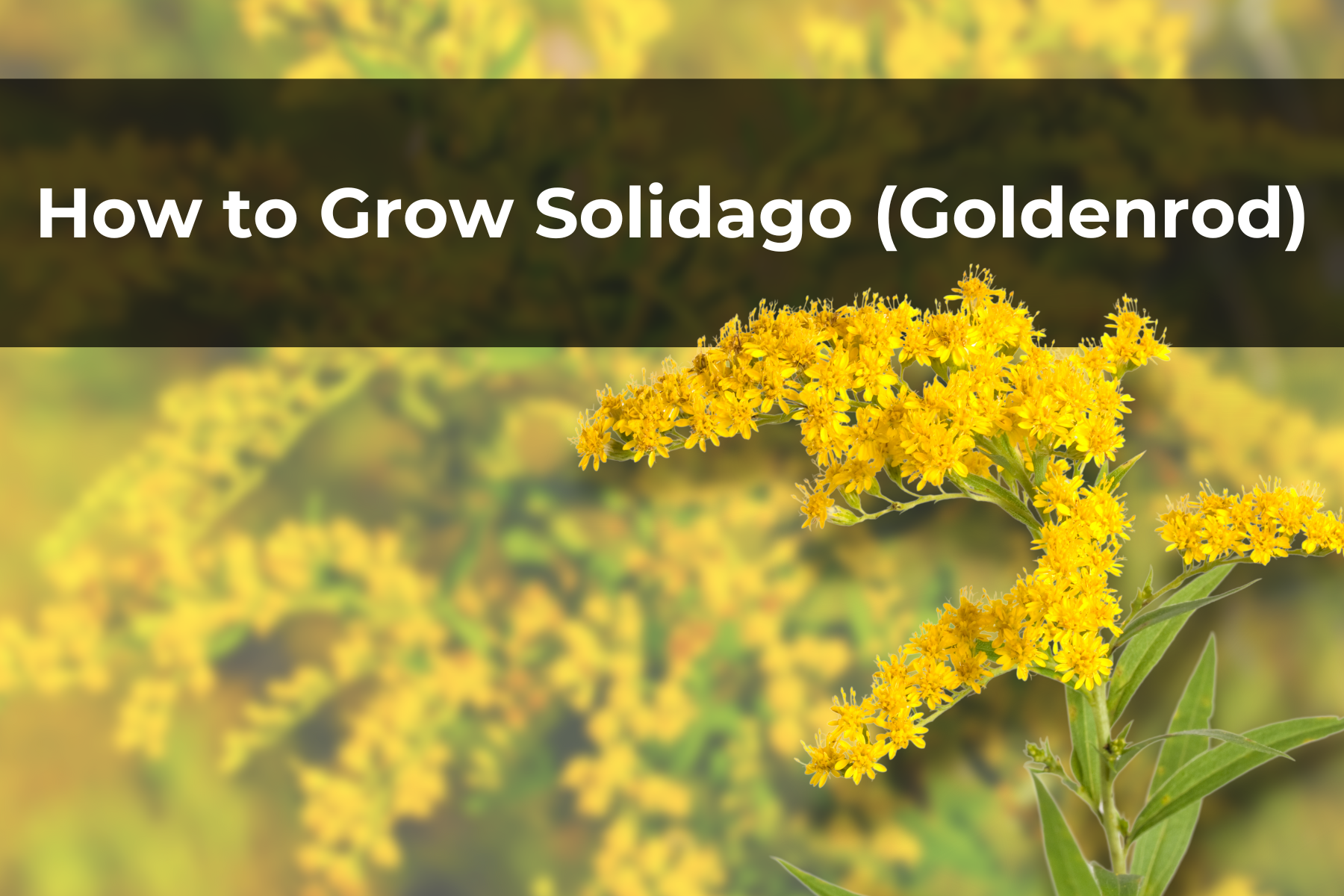Last Updated on June 12, 2023 by Real Men Sow
Solidago belongs to a small group of perennials that is herbaceous and provides stunning drifts of late-summer or autumn colour. This is a useful perennial for late blooming, and it’s well-suited to dry, sandy environments. It is loved by pollinating insects.
Solidago attracts bees and migrating butterflies, which is necessary for crop pollination. It is essential to have plenty of Solidago for fruit production.
Planting and Growing Solidago
Solidago is easy to grow and fuss-free. It can thrive in well-drained, poor-to-medium fertile soils. It prefers sandy soil ideal in full sunlight. Taller varieties can tolerate light shade, but they will thrive in full sun.
The golden rod is able to adapt to most conditions and can be established in a relatively drought-tolerant environment. Some species can become invasive species in small gardens, particularly those that are prone to self-seeding.
Propagating Solidago
By Division In Spring
- Once new growth has begun, you can lift the whole plant from the ground using a shovel. You can move it in pieces if it is too large. Each section should contain at least two growth tips.
- You can remove any soil that remains, as this helps to break down the rhizomes.
- Each section should be replanted at the same depth and watered well. Continue watering each division until new growth appears.
From Cuttings
- Use garden shears to trim four-inch shoots starting in the spring. Dip the ends in rooting hormones.
- Place the cuttings one inch deep in a pot of four to six inches filled with potting mixture. Water slowly until the soil is evenly moistened and water begins to drain from the drainage holes.
- The pot should be placed in a shaded area, away from direct sunlight and dry winds.
- At all times, keep the soil moist.
- You can transplant the Solidago to the garden when you notice new growth.
How to Grow Solidago From Seed
Growing Solidago from seeds is simple. The only thing that most Solidago species require is a 60-day period of cold stratification. This can be achieved naturally by sowing the seeds outdoors in a weed-free location in late fall or early spring so that the seeds are exposed to prolonged cold and moist conditions.
You can also artificially stratify your seeds by using a plastic bag with sand, vermiculite, and a damp paper towel. The bag can be kept in the fridge for 60 days at 40°F (or lower) Fahrenheit. Sow the seeds outdoors in the early or mid-spring after the stratification period.
You should sow the seeds as shallowly as possible, not deeper than the seed’s width, and then keep them moist until the seedlings emerge.
General Care Guide for Solidago
Light
For optimal flowering, Solidago needs full sunlight. Although the plant can tolerate some shade, it will bloom more efficiently in a sunny location.
Soil
Solidago isn’t fussy about soil, but it should be well-drained with a pH within the acidic-to-neutral range. The plant is tolerant of sandy, rocky, or clay soils. Plants with very rich soil can become leggy and may even fall over.
Water
To maintain a moist, but not soggy, soil, water new Solidago plants every week. Solidago plants that have matured are drought-tolerant and do not require additional watering, except in extreme cases of severe rainfall.
Temperature and Humidity
The hardiness ranges vary depending on the species. However, most Solidago thrives within USDA hardiness zones 2–8.
Fertilizer
Solidago thrives in dry soil conditions, so it is not necessary to fertilize them. If the soil is not of high quality or you want to give your plants an extra boost in height, then add a layer of compost to the spring. Fertilization too often can lead to floppy green growth, which reduces flower production.
Pruning
Pruning stem tips in the spring can make Solidago plants fuller, and bushier, and produce more flowers later in the season. Deadheading flower heads that have been used up can extend the bloom season to late fall. Preventing self-seeding can be prevented by removing flower heads before they become seeds. Cut the stalks of the plants to a few inches above the ground at the end or in the winter.
Common Pests & Plant Diseases of Solidago
Solidago isn’t affected by any serious diseases or pests but can be affected by powdery mildew and rust fungus. These fungal diseases can usually be tolerated. However, spraying with fungicide may be an option. In moist soils, root rot is an option as most species prefer dry soils.
Although Solidago is susceptible to beetles and aphids as well as gall-forming insects (though they are rare, fatalities are not common).


